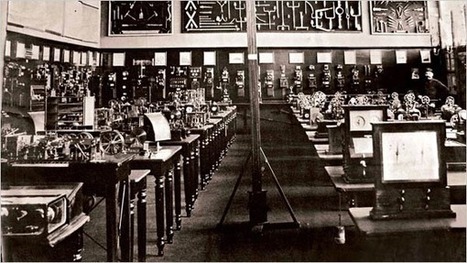In 1934, six decades before the birth of the web, a Belgian bibliophile described his vision for té lé photographie, an electronic telescope which could transmit any document in the world to a television screen.
Paul Otlet loved libraries. In 1895 he met a kindred spirit, fellow Belgian and future Nobel Prize winner, Henri La Fontaine. Together they conceived The Mundaneum, a comprehensive collection of the world’s published knowledge, equal in ambition to the great Library of Alexandria.
By 1910 they had collected thousands of books, newspapers, photographs, journals, posters and postcards. Otlet called the collection the ré seau, a network of documents connected by links. More than blind signposts, these links described the relationships between documents, an implementation of what we now call the semantic web. As the Mundaneum grew, this degree of annotation became unmanageable. ...
Via Jacques Urbanska, Ne10, Carol Ann BRAUN



 Your new post is loading...
Your new post is loading...







